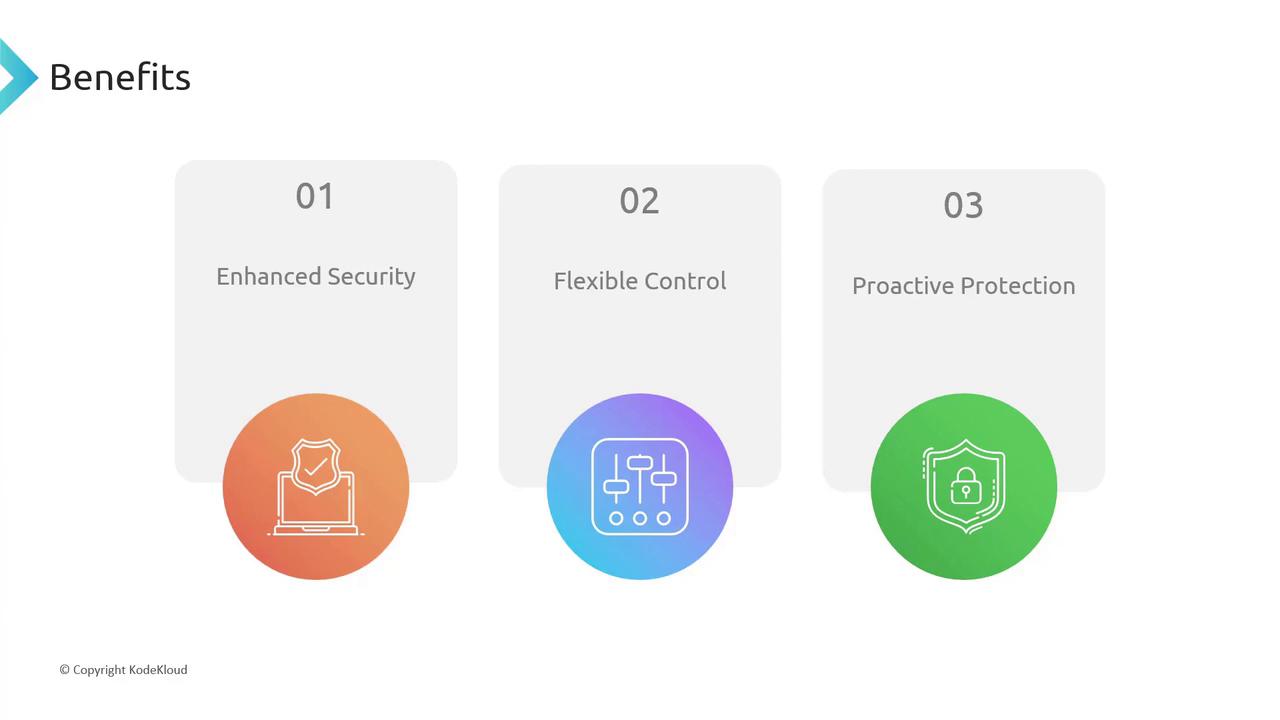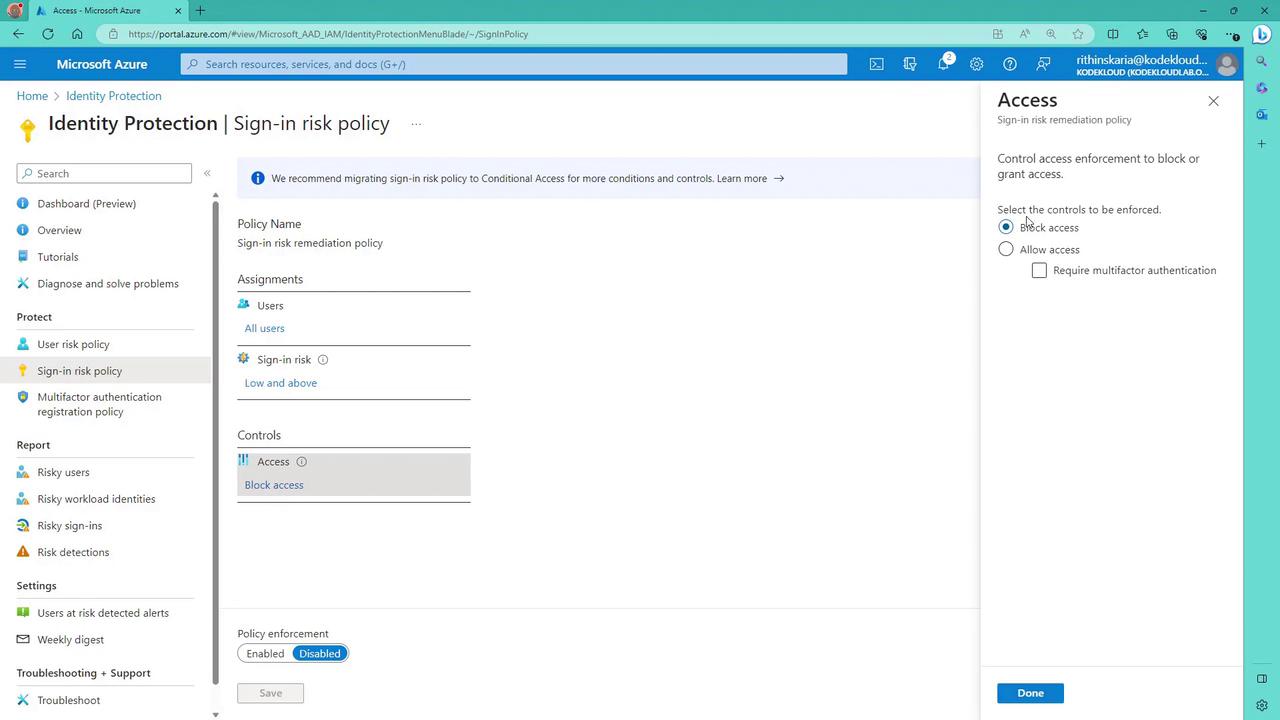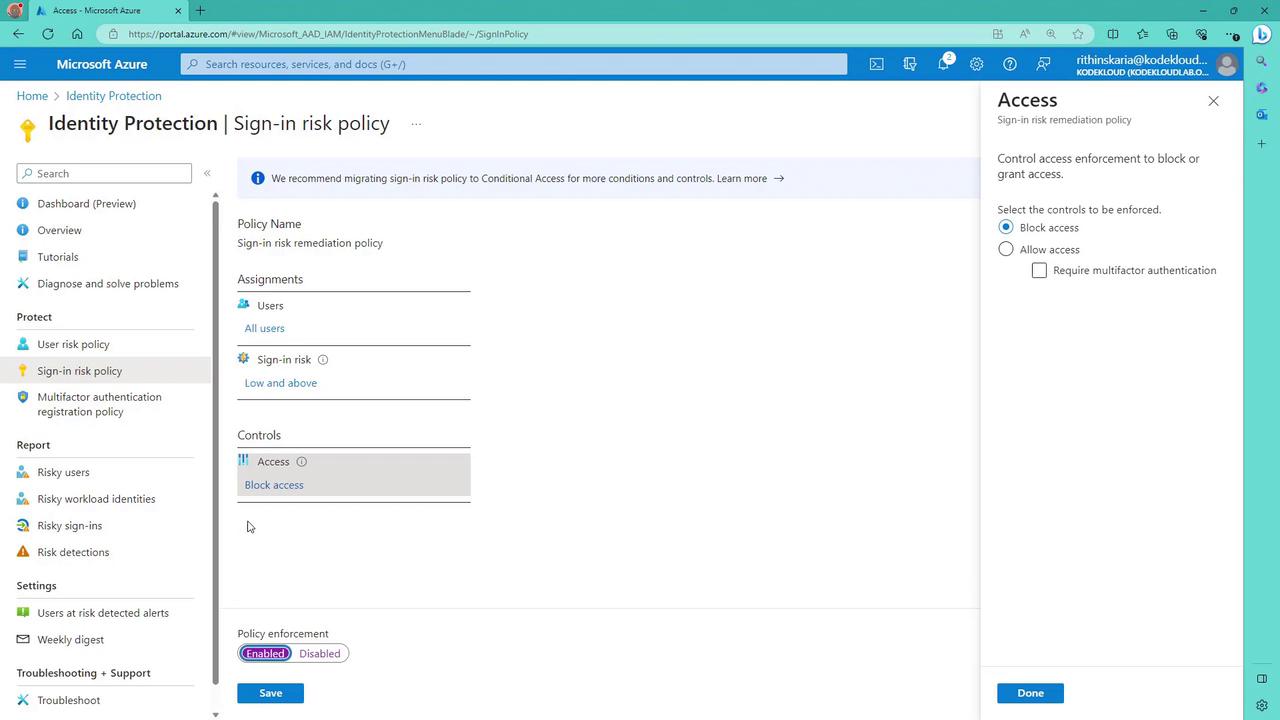Microsoft Azure Security Technologies (AZ-500)
Identity Protection
Implement sign in risk policy
This guide details how to configure and activate the sign-in risk policy within Azure AD Identity Protection. While sign-in risk and user risk policies may seem similar, understanding the distinction is crucial. Previously, we discussed the user risk policy in depth; now, let's focus on the sign-in risk policy.
The sign-in risk policy is designed to detect unusual or potentially harmful authentication attempts by evaluating the risk level of each sign-in event. In contrast to the user risk policy—which assesses the probability of a user's account being compromised—the sign-in risk policy is exclusively concerned with the authentication event itself.
Note
Although Microsoft recommends using a conditional access policy for enhanced flexibility and control, you can still configure the sign-in risk policy through the Azure Portal similarly to how you set up the user risk policy.
Key Benefits of the Sign-In Risk Policy
Implementing the sign-in risk policy in your Azure AD environment provides several significant advantages:
- Enhanced Security: Real-time detection and mitigation of suspicious sign-in attempts help prevent potential breaches.
- Flexible Control: Administrators can tailor responses based on the risk level, such as enforcing multi-factor authentication (MFA) or blocking access.
- Proactive Protection: Early threat detection enables prompt action to neutralize potential security incidents.

Configuring the Sign-In Risk Policy
When you log into the Azure Portal, the sign-in risk policy will appear just below the user risk policy. The configuration interface is similar, with settings specifically designed for evaluating authentication events. For example, you have the option to either block access or allow access with additional safeguards like MFA. This contrasts with the user risk policy, where actions might include enforcing a password reset.

The Azure Portal also recommends migrating from the sign-in risk policy to a conditional access policy. Conditional access provides more granular controls, flexible conditions, and improved overall policy management. More information on setting up conditional access will be discussed in a later section.
Activating the Policy
After you have configured the necessary parameters for the sign-in risk policy, simply enable and save your settings. This action immediately activates the policy, ensuring that your organization benefits from enhanced protections against risky authentications.

Up Next
We have now covered the implementation of Azure AD Identity Protection's sign-in risk policy. In the next section, we will guide you through setting up multi-factor authentication (MFA) in Azure and verifying its functionality, further strengthening your security posture.
Thank you for reading. More content is coming soon.
Watch Video
Watch video content